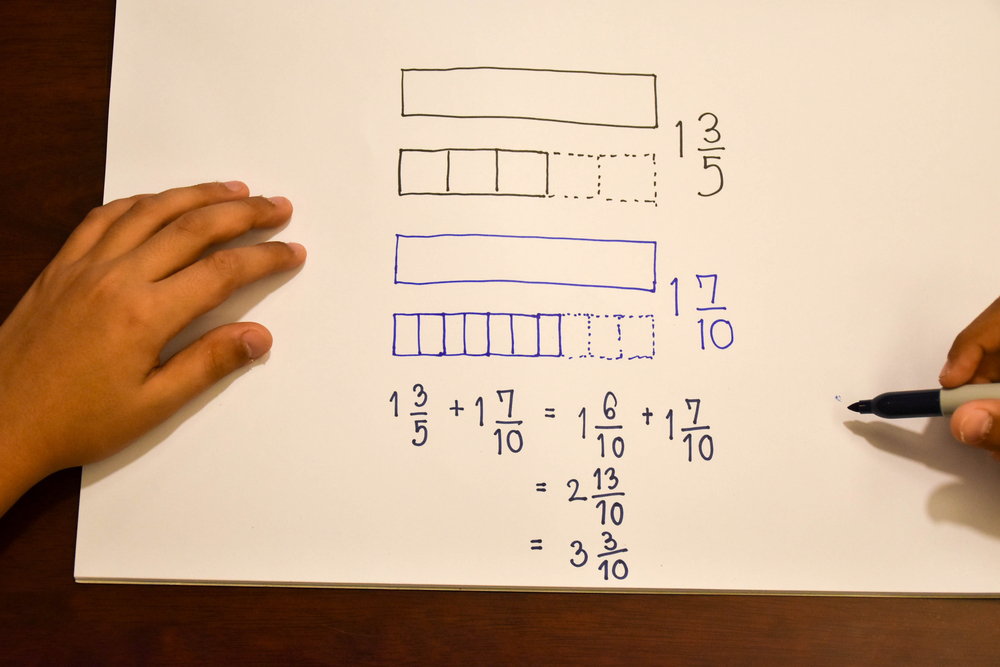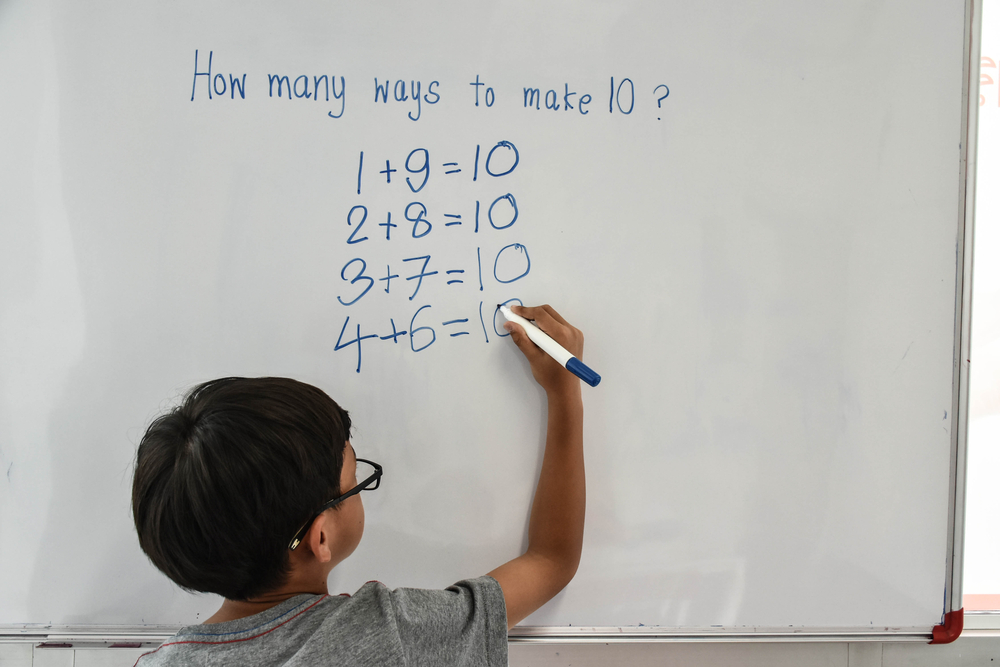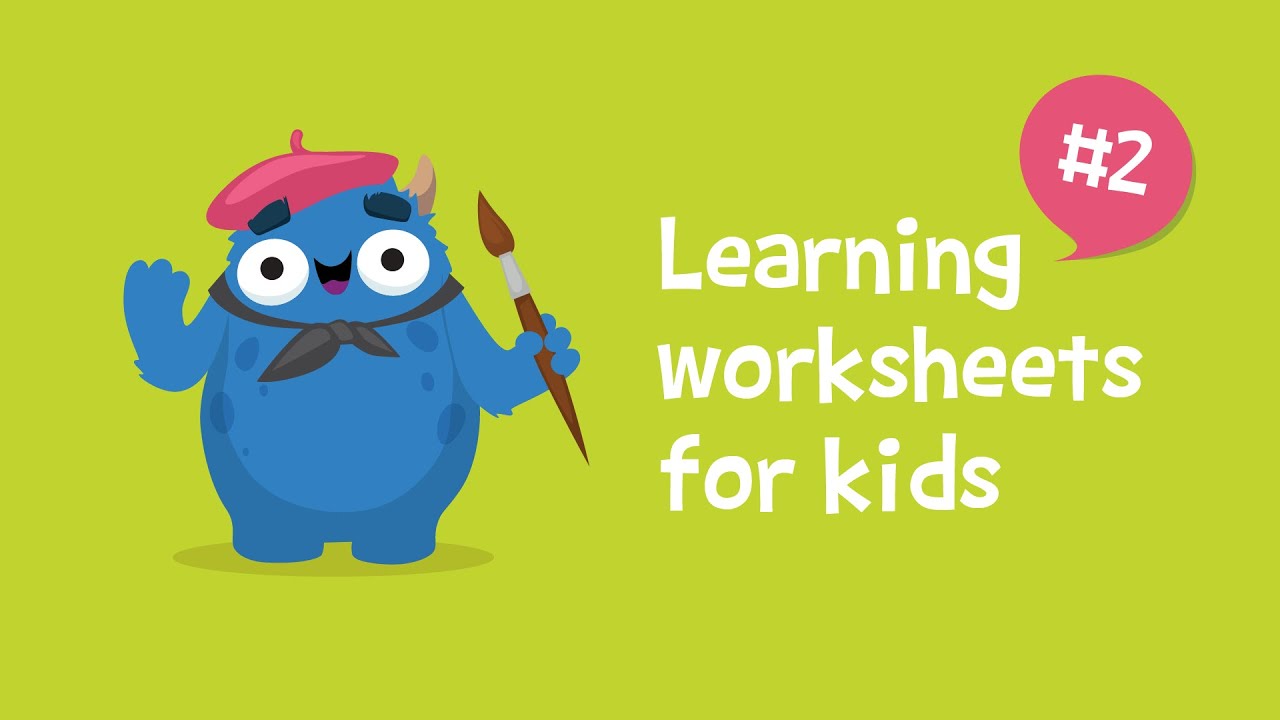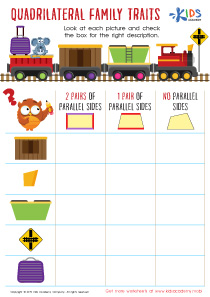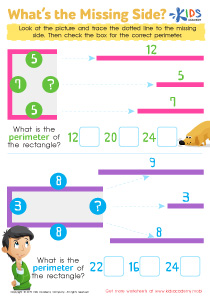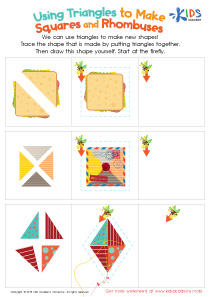Normal Fractions of Shapes Worksheets for Ages 3-8
5 filtered results
-
From - To
Introduce young learners to the world of fractions with our engaging "Normal Fractions of Shapes Worksheets" designed for children ages 3-8. These fun and colorful worksheets help kids understand basic fraction concepts by dividing and coloring different shapes. This visual approach enhances comprehension, making it easier for children to grasp the idea of parts and wholes. Suitable for early learners, our worksheets offer a balance of learning and play, ensuring kids develop essential math skills while enjoying the process. Perfect for parents, teachers, and homeschoolers looking to provide quality, educational content that keeps young minds curious and active.
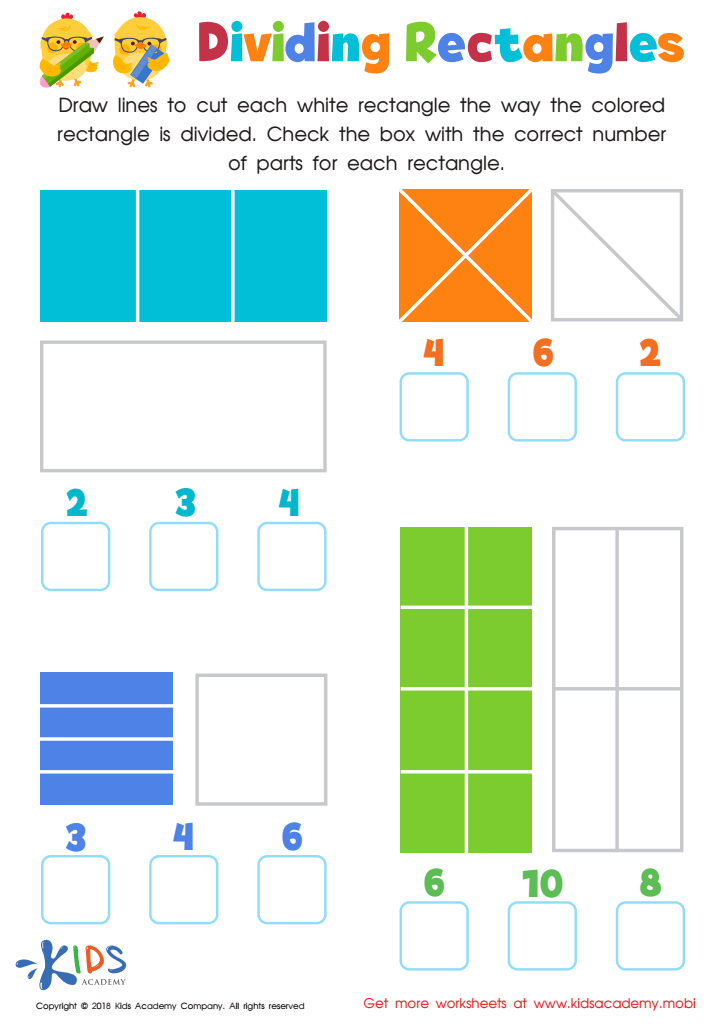

Dividing Rectangles Worksheet
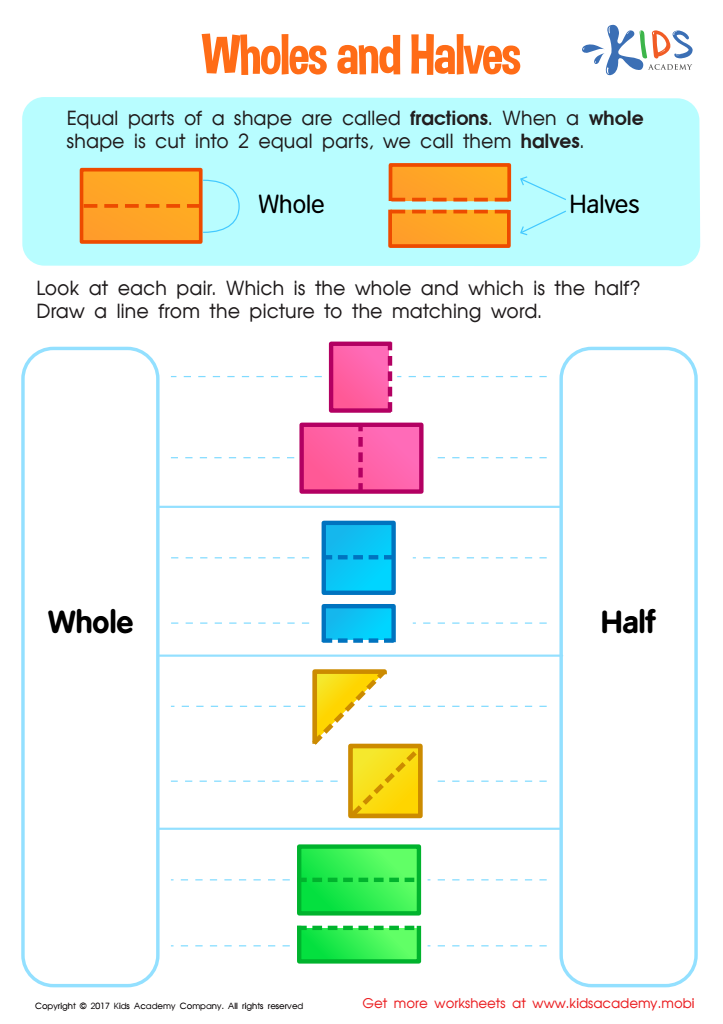

Wholes and Halves Worksheet
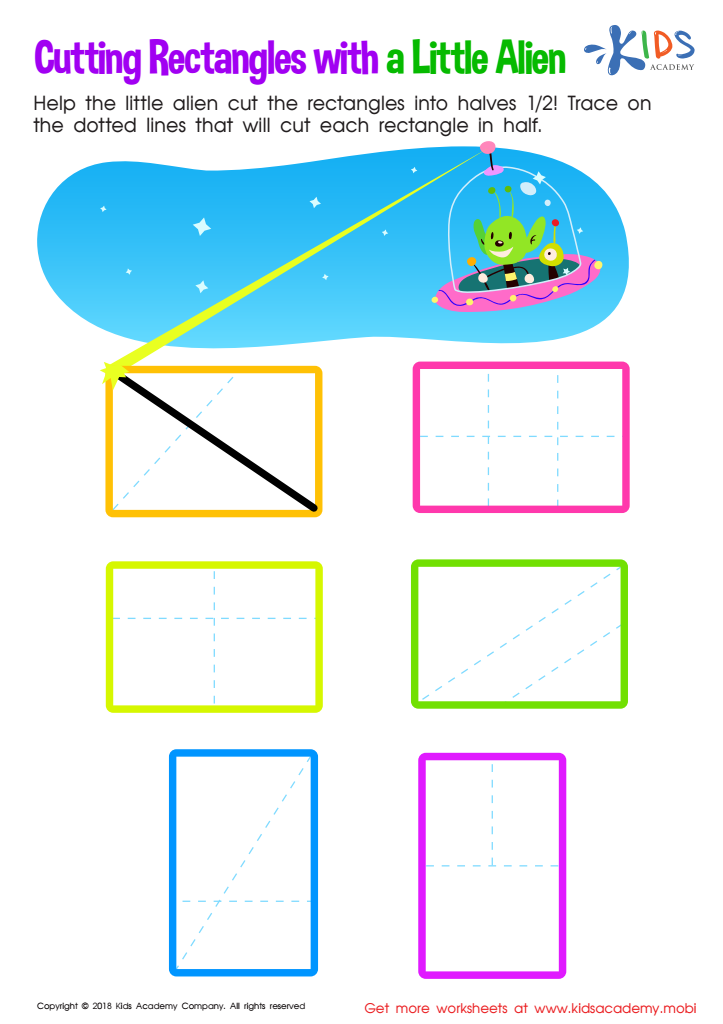

Cutting Rectangles with Alien Worksheet
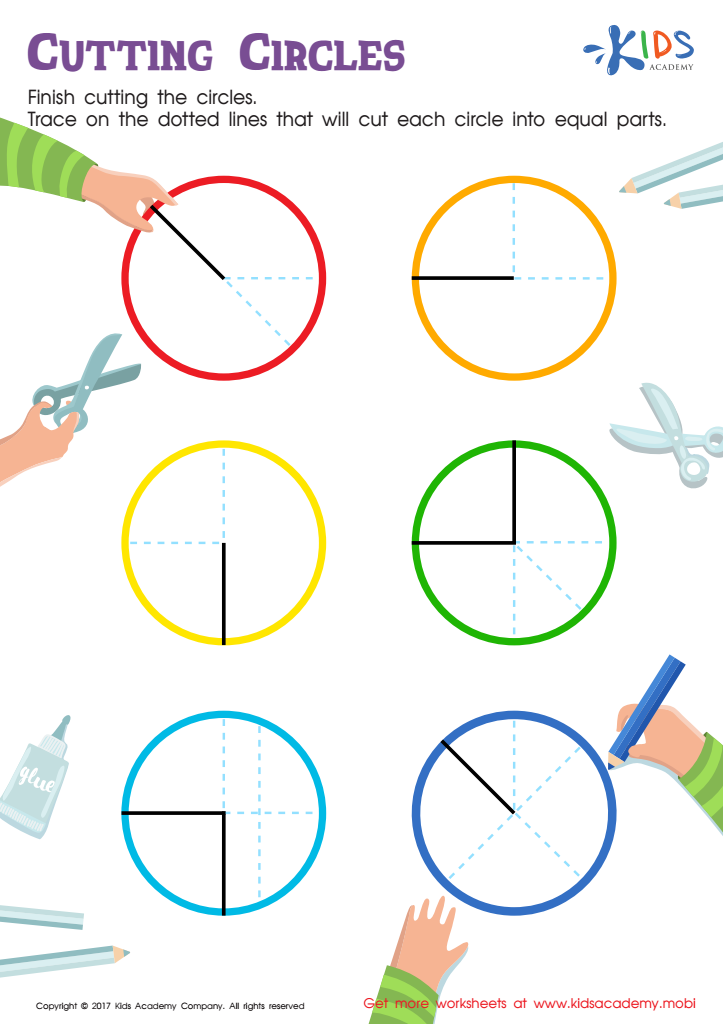

Cutting Circles Worksheet
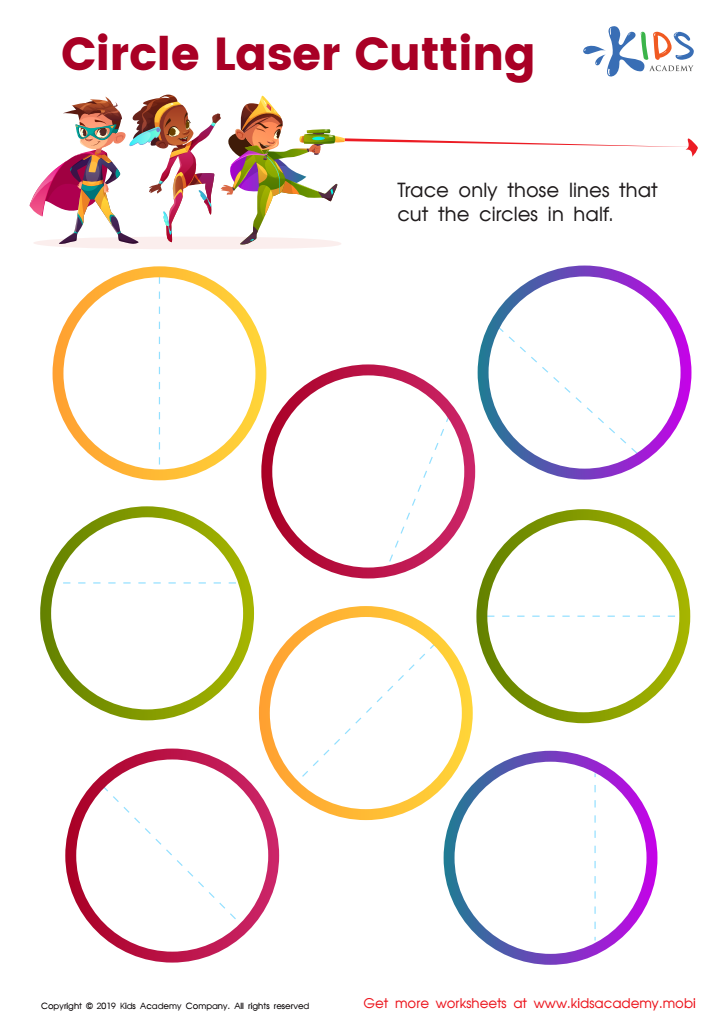

Circle Laser Cutting Worksheet
Understanding normal fractions of shapes is crucial for children aged 3-8 because it lays the groundwork for fundamental math skills and cognitive development. At this age, children are highly visual learners, and using shapes to represent fractions helps them grasp abstract mathematical concepts more concretely.
Firstly, learning fractions of shapes builds a child's ability to partition objects, which is essential for understanding more advanced arithmetic operations. For instance, recognizing that a circle divided into two equal parts represents halves directly translates to comprehending division and multiplication later on.
Secondly, normal fractions of shapes nurture problem-solving and critical thinking skills. When children identify how various shapes can be divided and reassembled, they boost their spatial reasoning, which is vital in subjects like geometry.
Moreover, this early introduction to fractions improves numerical literacy. Children begin to see the relationships between numbers and shapes, helping them develop a holistic understanding of math.
Lastly, teaching normal fractions in engaging, hands-on ways fosters a positive attitude towards learning math. Activities involving playful interaction with fractions—like folding paper, cutting fruits, or piecing together puzzles—make learning fun and intuitive.
In summary, focusing on normal fractions of shapes for young children not only equips them with essential arithmetic skills but also enhances their overall cognitive, spatial, and numerical development.

 Assign to the classroom
Assign to the classroom

